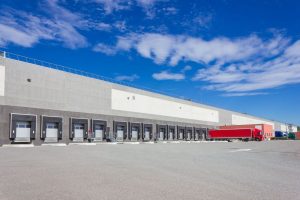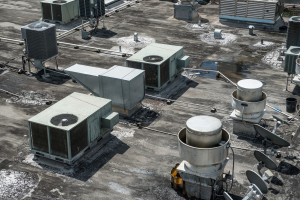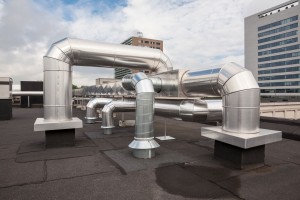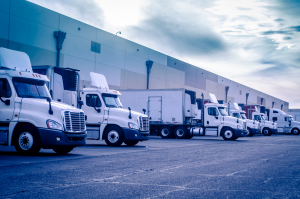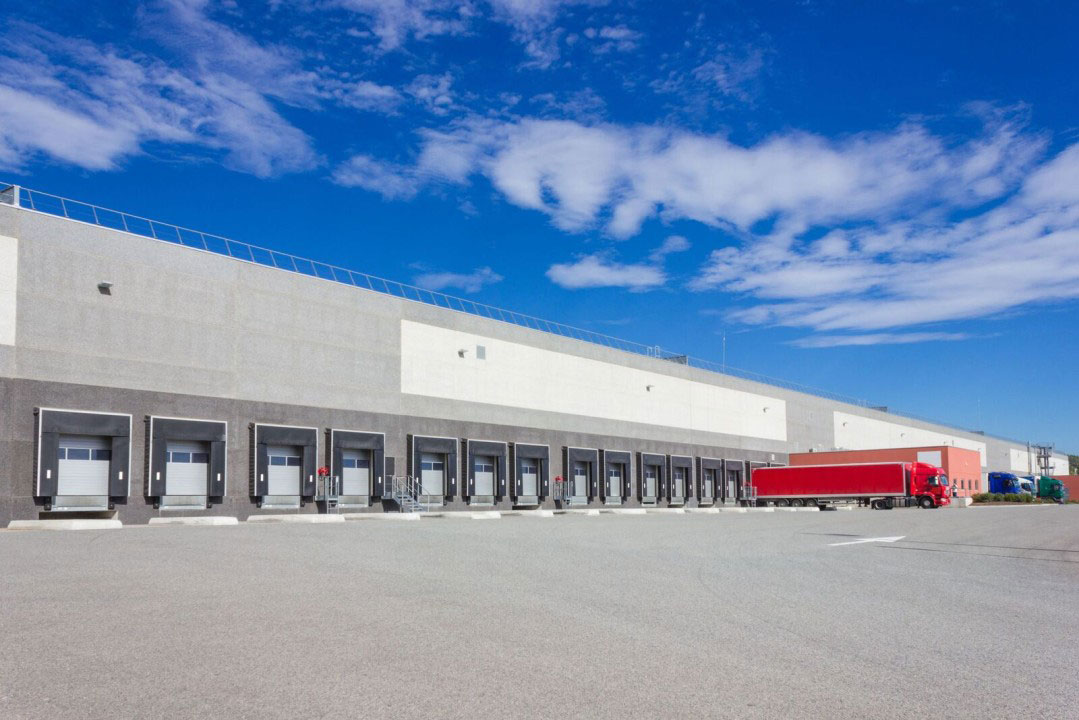
How to Maximize and Preserve the Value of Your Investment – Part 2
Last week we introduced our series on Maximizing and Preserving the Value of Your Investment, where we specifically talked about producing a “Maintenance, Repairs, and Capital Replacement Plan” to ensure that you, as an owner and investor – can insulate yourself from large, sudden capital expenditures, as well as maintaining the integrity of your property.
When it comes to executing on these items, there are several strategies and ways to do so…
Firstly, you should ensure your Offer to Lease and Lease Agreement clearly stipulate that your Lease is triple-net and care-free to the Landlord, whereby your Tenant is responsible for all costs associated with maintaining, repairing, and replacing the property.
Additionally, you should establish a ‘sink fund’ so that you will be able to cover any replacement costs when they arrive. In my experience, this is not a bill you want to receive out of the blue and without significant cash previously set aside.
We will discuss all of these strategies throughout the article, and give you examples of how you may want to implement them.
And so…
If you are an investor that owns and manages an industrial building or a portfolio of industrial buildings, then you will know that how you deal with the regular ongoing building maintenance, repairs and replacements of capital items can make a huge difference to your bottom line, as well as your tenant’s satisfaction.
In my experience, most of the large property owners with systems and teams of “in-house” or external managers and advisors in place; from maintenance and legal to property and asset management, have everything, or most of it covered. However, many small- and mid-size Investors have lots of room for improvement.
In many cases, these Investors are leaving money on the table and are not fully maximizing their return on investment.
So how can you ensure you maximize your returns and preserve the value of your investment?
First, it is imperative that at the Offer to Lease states all the responsibilities of the Tenant to maintain, repair and replace are clearly outlined and furthermore that the Landlord’s Standard Form of the Lease Agreement explains such responsibilities in more details so that there is no misunderstanding.
Such Offer to Lease should state that the Tenant is obligated to pay Landlord’s costs and expenses or in the case of a multi-tenant building, the Tenant’s proportionate share of the Landlord’s costs and expenses, attributable to the ownership, administration, operation, management, maintenance, improvement, insuring, cleaning, policing, supervision, rebuilding, replacement and repair of the property and realty taxes on the property, plus an administration fee equal to fifteen percent (15%) of such costs and expenses. This percentage is predominantly used and generally accepted.
It is important to point out that if the Landlord desires to recover any administrative fees and/or management fees, it is important to ensure that specific language reflecting these terms is included in the Offer to Lease and the Lease Agreement.
As some would say, there are “many ways to skin a cat”… you just want to ensure that whatever you do makes sense for your particular situation.
The definition of “Operating Costs” in an Industrial Lease should specifically include “capital costs”, and/or “costs/expenditures of a capital nature”. Clearly, an expense incurred to “create, acquire or improve” a capital asset would amount to a capital cost.
Capital cost in the context of an Industrial Lease is generally the replacement of an HVAC system, roof membrane replacement, and repaving of a parking lot and shipping and trucking corridor around a building.
The question would then arise whether the capital costs should be fully charged in the year in which the cost was incurred, or whether such cost should be amortized with or without interest charged on the unamortized portion, and what method of amortization will be used… Whether to use the “straight-line” method to zero over the useful life of the expenditure or a “variable” or “accelerated” method.
In the event the Lease Agreement doesn’t clearly state that the Landlord is entitled to recover an interest cost on the unamortized portion, no such charge may be passed through.
Mechanical Equipment
Some Lease Agreements would call for the Tenant to maintain, repair, and replace the property without stating that capital replacements should be amortized over the useful life of an item. This means that Tenant would be responsible for the full cost of such capital replacement when it actually occurs.
Another option would be the Landlord establishing a “sink fund” and, following the occupancy date, start collecting the annual amortized cost for the replacement of major building components (roof membrane, HVAC Systems, and asphalt)… so that when the time comes for said replacements Landlord will actually have the funds to do so.
Example Clause:
ADDITIONAL RENT: The Tenant acknowledges that it is intended and agreed that the Lease contemplated by this Proposal will be a completely carefree net lease for the Landlord and it is the mutual intention of the parties that the Basic Rent shall be completely net free to the Landlord except as otherwise provided for in the Lease. In addition to Basic Rent, the Tenant shall be responsible for paying Property Taxes and Operating Costs including but not limited to utilities, Building insurance, common area and exterior Building maintenance, general maintenance, repairs and replacements (excluding inherent defects in footings, foundations, bearing walls, structural steel and/or metal roof deck and insurable losses) (“Additional Rent”).
Property Taxes and Operating Costs shall be paid by the Tenant to the Landlord in advance, in equal monthly installments, on the first day of each month during the Term, based on the Landlord’s estimates, without deduction, set-off or abatement compensation, except as provided in the Lease or at law. Property Taxes shall be paid in equal installments over the first eight months of each calendar year. The following estimates (which are based on the previous year’s actual expenses) are Landlord administered costs payable by the Tenant: Realty taxes: $______ per sq. ft. per annum; Exterior Maintenance: $_____ per sq. ft. per annum; Insurance: $_____ per sq. ft. per annum; Office HVAC Charges: $______ per sq. ft. per annum; Roof Replacement Charges: $______ per sq. ft. per annum; Total $______ per sq. ft. per annum, plus a fifteen percent (15%) of such costs and expenses as a management fee.
The foregoing are non-binding estimates only. Adjustments, either up or down, shall be made annually for additional rent costs based on actual amounts paid or incurred by the Landlord. Additional cost administered and payable by the Tenant include, without limitation, the Tenant’s insurance, inside maintenance and repair, utilities and housekeeping. Exterior maintenance, including the repair of the roof membrane, shall be undertaken by the Landlord but charged to the Tenant through Operating Costs. The Landlord shall be responsible for replacement of the roof membrane and replacement to major components of the office HVAC at no additional cost to the Tenant, through the payment by the Tenant of the roof and office HVAC replacement charges which are included in the estimate of Operating Costs of the Premises, unless the need for such replacement is caused by the Tenant.
Industrial roof
Alternatively, the Landlord may start recovering the cost of such capital replacement following the actual replacement of a capital item.
Example Clause:
1.2 Determination of Operating Cost “Operating Cost” means an amount per square foot in respect of a Fiscal Year (calculated to the nearest cent) established in accordance with generally accepted accounting principles (as those principles may be further defined and refined by the Canadian Institute of Chartered Accountants and whether or not referred to by any other term) and confirmed in a certificate of Landlord, and equal to the sum of the following costs, divided by the number of Square Feet of Space in the Building: (a) all costs, expenses and charges which are attributable to the insuring, operation, repair, maintenance of the Project including, without limiting the generality of the foregoing, Tax Cost, HVAC Cost, depreciation or amortization of or upon buildings or structures and permanent parts thereof, equipment and fixtures, interest calculated at the rate of two percent (2%) per annum in excess of the Prime Rate upon the un depreciated or unamortized portion of the cost and expense of the facilities and capital replacement of the buildings or structures and permanent parts thereof and the systems for heating, ventilating and air conditioning the Project, and repairs and replacement of the roofs and parking facilities of the Project, and (b) all expenses after the date any space in the Project was first occupied by any tenant and properly allocable to the Fiscal Year for any capital improvement or structural repair to the Project, or required by any change in the laws, rules, regulations, or orders of any Authority having jurisdiction, or incurred to reduce Operating Cost, which expenses will be amortized in accordance with generally accepted accounting principles, and interest calculated at the rate of two percent (2%) per annum in excess of the Prime Rate upon the unamortized portion of the total costs of the foregoing, and (c) General Project Expense in the Fiscal Year, and (d) A charge for off-site administration overhead equal to 15% of the total of the items set out in subsections 1.2 (a), (b) and (c) above including any good and services taxes, or any similar tax, thereon in the Fiscal Year.
Industrial Building – Trucking area
It is also advisable to stipulate in the lease that any item costing less than a certain amount will be ‘deemed non-capital’ and will become the responsibility of the Tenant to replace as part of Tenant’s ongoing regular annual maintenance, repair and replacement obligation.
Example Clause:
Capital Repairs and Replacements: If at any time during the term of this Lease or any renewals thereof, a capital repair or replacement of the roof membrane, asphalt, HVAC units or heating units is required, then the Landlord shall do such repairs and replacements as would a prudent owner.
The cost of such capital repairs and replacements shall be paid from the provisions for capital repair and replacement portion of the Additional Rent. For greater clarity, such capital repairs and replacements shall exclude any repairs and replacements to the Premises, the cost of which shall be less than Ten Thousand Dollars ($10,000.00) per occurrence and shall be at the sole cost of the Tenant, payable as part of the Tenant’s ongoing regular maintenance and repair obligations of the Premises.
Conclusion
So, now that you have completed a Property Condition Assessment Report and have put in place a Repairs, Maintenance, and Capital Replacements Plan, and you have ensured that the cost of regular maintenance, repairs, and capital replacements is recovered from your tenants…
And so now that you understand how your building will perform over time… and what it is that you will need to do to ensure its maintenance (and how much it will cost to do so)…
And you’ve put in place the proper legal documents to have the maintenance, repair, and replacement costs recovered over time…
Then, understanding and analyzing all of the different building components and systems will make all the difference in executing these strategies.
In our next newsletter, we will dive deeper into each one of these major building components to help you better understand the different types of industrial roofing, HVAC and mechanical systems, and specifications for asphalt, as well as the costs that will be incurred.
Disclaimer: This content is produced for informational and educational purposes only. This is not meant to replace legal or other subject matter expert advice, as each situation is different and may require a range of customized solutions. Please speak to the proper legal or specific subject matter expert counsel before making a decision or taking action.
If you would like us to help assess your needs and put you in touch with the right people, do not hesitate to reach and contact us.
Until next week…
Goran Brelih and his team have been servicing Investors and Occupiers of Industrial properties in Toronto Central and Toronto North markets for the past 25 years.
Goran Brelih is a Senior Vice President for Cushman & Wakefield ULC in the Greater Toronto Area.
Over the past 27 years, he has been involved in the lease or sale of approximately 25.7 million square feet of industrial space, valued in excess of $1.6 billion dollars while averaging between 40 and 50 transactions per year and achieving the highest level of sales, from the President’s Round Table to Top Ten in GTA and the National Top Ten.
Goran is currently serving as Immediate Past President of the SIOR ‐ Society of Industrial and Office Realtors, Central Canadian Chapter and on the Board of Directors of Muki Baum Accessibility Centre, a Toronto‐based NGO which provides support to children and adults with complex disabilities.
Specialties:
Industrial Real Estate Sales and Leasing, Investment Sales, Design-Build and Land Development
About Cushman & Wakefield ULC.
Cushman & Wakefield is a leading global real estate services firm that delivers exceptional value by putting ideas into action for real estate occupiers and owners. Cushman & Wakefield is among the largest real estate services firms with 48,000 employees in approximately 400 offices and 70 countries.
In 2017, the firm had revenue of $6.9 billion across core services of property, facilities and project management, leasing, capital markets, advisory, and other services. To learn more, visit www.cushmanwakefield.com or follow @CushWake on Twitter.
For more information on GTA Industrial Real Estate Market or to discuss how they can assist you with your real estate needs please contact Goran at 416-756-5456, email at goran.brelih@cushwake.com, or visit www.goranbrelih.com.

